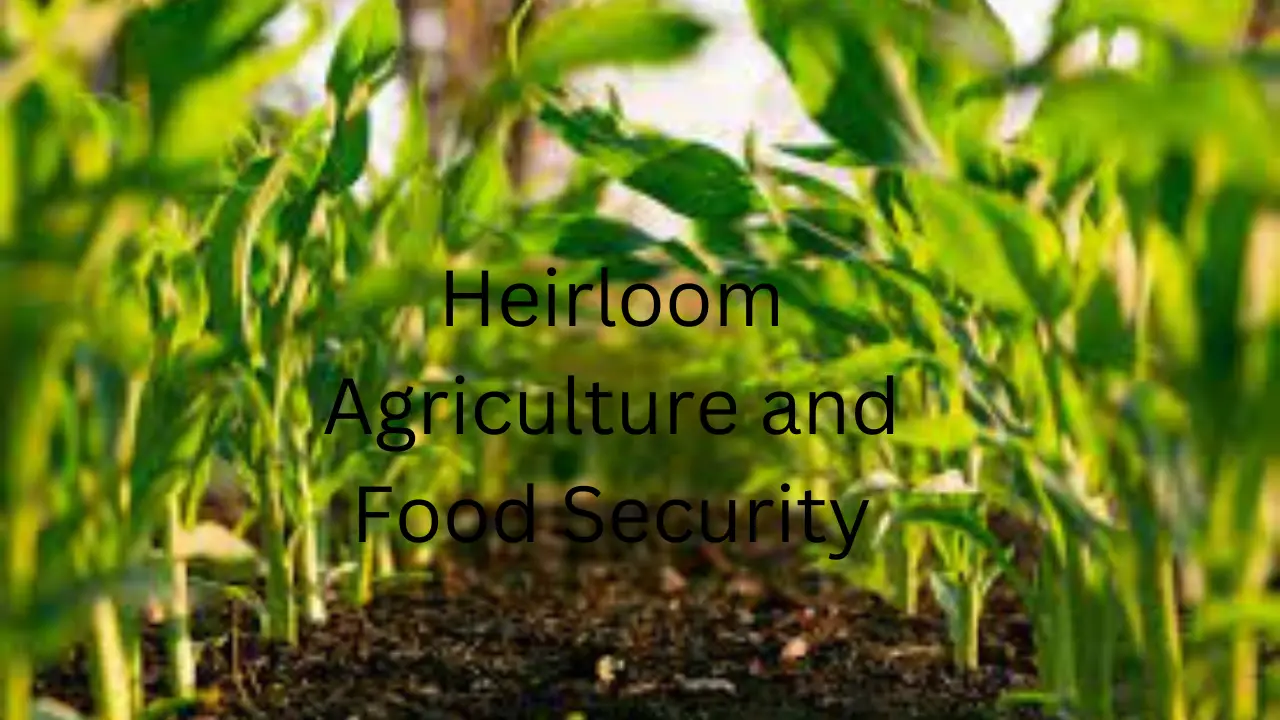
Stanley Quencher H2.0 FlowState Stainless Steel Vacuum Insulated Tumbler with Lid and Straw for Water, Iced Tea or Coffee, Smoothie and More, Ash, 14oz
$20.00 (as of October 22, 2024 10:19 GMT +00:00 - More infoProduct prices and availability are accurate as of the date/time indicated and are subject to change. Any price and availability information displayed on [relevant Amazon Site(s), as applicable] at the time of purchase will apply to the purchase of this product.)Heirloom Agriculture and Food Security
In the ever-evolving world of agriculture, where innovation and technology often take center stage, the concept of heirloom agriculture stands as a symbol of tradition, biodiversity, and food security. Heirloom plants, with their rich history and unique characteristics, play a vital role in safeguarding our food supply for generations to come.
What Are Heirloom Plants?
Heirloom plants are a diverse group of cultivars, often passed down through families or communities for generations. These plants, whether fruits, vegetables, or grains, are treasured for their distinct flavors, colors, and traits. Unlike modern hybrids, heirloom varieties are open-pollinated, which means they can reproduce true to their parent plants.
The Historical Significance
The roots of heirloom agriculture trace back centuries, where communities carefully selected and saved seeds from the best-performing plants. This practice resulted in a rich tapestry of crop diversity, adapted to local conditions and preferences. Heirloom varieties have been a source of sustenance and cultural significance for countless generations.
Why Heirlooms Matter for Food Security
In an era of climate change and volatile food supplies, heirloom plants offer a crucial lifeline for food security. These resilient varieties are often better adapted to local climates, making them more reliable in adverse conditions. Their genetic diversity also makes them less susceptible to diseases and pests, reducing the risk of crop failures.
Biodiversity in Heirloom Agriculture
Heirloom agriculture is a sanctuary for biodiversity. These plants come in a stunning array of shapes, sizes, and colors, preserving genetic diversity that is essential for crop resilience. They also provide habitat and food for pollinators, contributing to overall ecosystem health.
Challenges to Heirloom Agriculture
While the value of heirloom agriculture is undeniable, it faces challenges such as market demand, loss of traditional knowledge, and competition from modern hybrids. These issues threaten the continued existence of many heirloom varieties.
Sustainable Agriculture Practices
One of the strengths of heirloom agriculture lies in its compatibility with sustainable farming practices. These plants often thrive in organic and low-input farming systems, reducing the environmental footprint of agriculture.
Local Communities and Heirloom Agriculture
Heirloom agriculture isn’t just about crops; it’s about people. Local communities benefit from heirloom varieties, which strengthen cultural ties, support small-scale farming, and create economic opportunities.
The Taste of Tradition
One of the most delightful aspects of heirloom produce is its unparalleled taste. Heirloom tomatoes burst with flavor, and heirloom apples offer nuanced sweetness. These flavors harken back to a time when food was grown for taste, not just shelf life.
Growing Your Own Heirlooms
Interested in growing your own heirloom plants? We’ll provide you with essential tips and tricks to get started on your heirloom gardening journey.
Heirlooms in Modern Cuisine
Restaurants and chefs around the world are turning to heirloom ingredients to create unique and memorable dining experiences. Discover the culinary magic that heirlooms bring to the table.
Preserving Heirloom Seeds
Seed banks play a vital role in preserving heirloom plant genetics. Learn about the initiatives dedicated to safeguarding these precious seeds for future generations.
Government Initiatives
Governments are recognizing the importance of heirloom agriculture in food security. Explore some of the initiatives and policies aimed at supporting heirloom farming practices.
Future Prospects
As we face mounting challenges in feeding a growing global population, heirloom agriculture offers hope. Its resilient and diverse crops could hold the key to ensuring food security in a changing world.
Conclusion
In a world racing towards innovation and efficiency, heirloom agriculture stands as a reminder of our roots. These time-honored plants not only provide delicious, unique food but also hold the key to a more secure and biodiverse food future.
FAQs
1. What distinguishes heirloom plants from other crops? Heirloom plants are distinguished by their open-pollinated nature, passed down through generations for their unique traits and flavors.
2. How can I start my own heirloom garden? Starting an heirloom garden requires selecting suitable varieties for your region, saving seeds, and following organic gardening practices.
3. Are heirloom crops more resilient to climate change? Yes, heirloom crops often exhibit greater resilience to changing weather patterns and are better adapted to local conditions.
4. Why are heirlooms important for biodiversity? Heirloom plants preserve genetic diversity, which is crucial for crop resilience and ecosystem health.
5. What role do seed banks play in preserving heirlooms? Seed banks collect and safeguard heirloom seeds, ensuring their availability for future generations and research purposes.










